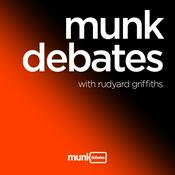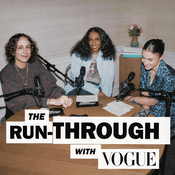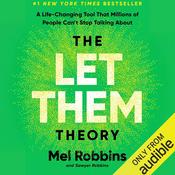588 episodes

Awar Odhiang on Joy, Inclusion and Her Viral Chanel Moment
2025-12-19 | 26 mins.
Born to South Sudanese parents and raised in Canada after arriving as refugees in 2002, Awar Odhiang grew up far from fashion’s orbit. She was studying health sciences and planning a career in medicine, when she was scouted at her first job. Her career began locally in Calgary, then accelerated fast after she launched internationally in 2019 — with early runway breaks, a packed show schedule and global campaigns. Then came the moment that stopped the industry when she closed the most-watched debut of the season at Matthieu Blazy’s Chanel show in October.“The moment that really allowed me to fill that space in that way was the freedom that I was given, truly,” she says. Backstage, Matthieu Blazy, Chanel’s new creative director encouraged her to own the moment. “I just felt so free, so confident, so beautiful. You can tell Matthieu loves women just by his designs.”In this conversation from BoF VOICES 2025, I speak with Awar about the gap between being celebrated publicly and understood privately, why inclusion has to extend to behind the camera and the boundaries she is setting to protect her sense of joy in an industry that rarely slows down.Key Insights:Odhiang recounts meeting agent Kelly Streit whilst working her first job in retail and her scouting story captures a pivotal shift in self-belief. “That was a moment that now I can look back at and realise that he believed in me before I even believed in myself,” she says. From folding sweaters at Old Navy to international runways by 2019, she frames the leap as an intentional decision to embrace an unexpected opportunity.As a high profile dark skinned model, her growing visibility hasn’t eliminated her feelings of isolation. “One of the darker sides of modelling I would say is really the [lack of] inclusion … the fact that we’re still talking about this today really shows how big of a problem that is.” She defines inclusivity as being allowed to be at ease rather than just token representation: “For me, inclusion is being able to be in a room and not have to translate yourself … where you’re not the only person who looks like you, where you’re not the only person who’s expected to speak on certain matters.”Moreover, whilst diverse campaigns can signal progress, backstage the culture still lags behind. “Being welcomed publicly and being understood privately —. I think they’re two very different things,” Odhiang says. “A lot of it [is] performative … behind the scenes there’s no diversity. There’s nobody who’s really understanding you, your story, how you’ve been treated. So that’s really dismissed a lot.” Her call is for decision-room diversity, consistency rather than trends, and respect for lived experiences.As attention intensifies, Odhiang is resolute about boundaries and community. “I would protect this joy, this joy in my heart, this joy of my soul, by continuing to set boundaries … by also keeping the company around me honest and close, and by also not allowing the pace of the industry to impact the pace of me as a human,” she says. For her, sustainability is emotional as much as professional — maintaining a human tempo amid fashion’s demands.Additional Resources:Awar Odhiag | BoF 500 Awar Odhiang: Choosing Joy Hosted on Acast. See acast.com/privacy for more information.

The Sneaker of the Year 2025
2025-12-17 | 28 mins.
Choosing “sneaker of the year” has rarely been this contentious. In 2025 the debate has splintered opinion between incumbent players like Nike and contenders from Vans, Converse and New Balance as consumers test the field.Whilst Nike’s shadow looms and expands with new silhouettes, real-world volume is being driven by ‘regular’ pairs like ASICS’ black-and-silver GEL-1130.In this episode of The Debrief, BoF’s Sheena Butler-Young and Brian Baskin sit down with Mike Sykes to unpack the data, the storytelling and what this year signals for 2026.Key Insights:In a widening market, this year’s debate has splintered opinions. Unlike typical years with “two to three shoes,” 2025 felt like “it’s five, it’s six, it’s seven, it’s eight,” says Sykes. He frames it as consumers testing “Nike versus the field,” with many deciding, “I’m actually gonna try the field for once,” which explains why we have seen credible contenders from Vans, Converse, New Balance and more.At the same time, reports of Nike’s demise are overdone. “Nike has always – and, in my opinion, probably will always – be the industry standard. The company is just too big at this point; it makes too much money. Even when it fails, it’s still a notch above its competition,” says Sykes. The real question now is which Nike silhouettes win attention. A few years ago it was largely Jordan 1s, 3s and Dunks, however now styles like Infinite Archives 17, Awake’s Jordan 5, and Nigel Sylvester’s Jordan 4 are all taking space.Hype is increasingly powered by storytelling that feels personal rather than driven by pure scarcity. Nigel Sylvester’s Jordan 4 showed how “over the top” yet authentic activations made fans attach to Nigel beyond the sneaker. “He’s riding his bike, kissing babies, shaking hands,” says Sykes. It’s “absolutely marketing” but designed to connect on emotion.On sneaker resale marketplace StockX, beneath the headline-grabbing premiums, Asics is moving serious volume with everyday pairs. As Mike notes, “the black and silver Asics Gel-1130 is just a common shoe that you could probably just go to your Foot Locker and buy,” yet he sees “people just buying the shoe up.” Set against hype, the GEL-1130 shows how “regular everyday shoes that look cool” can dominate real-world sales even when they’re absent from sneaker-of-the-year shortlists.Additional Resources:The Sneakers That Mattered Most in 2025The Kicks You Wear: The Collab of the Year With Bimma WilliamsThe Kicks You Wear: The Death of Sneakers Is Overstated Hosted on Acast. See acast.com/privacy for more information.

Riz Ahmed on the Radical Power of Storytelling
2025-12-12 | 16 mins.
To close the first session of this year’s BoF VOICES on The Wider World, we wanted a voice that could cut through the noise and offer a clear, powerful call to action for human unity at a time when everything feels like it's breaking down. Few artists are better positioned to do that than Riz Ahmed.An Oscar and Emmy-winning actor, producer and musician, Riz has built a career at the intersection of culture, politics and humanity — from Sound of Metal to The Night Of, and through music and activism that challenge how stories are told, and who gets to tell them.Drawing on his upcoming adaptation of Hamlet, set in contemporary London, he argues that one of the most famous speeches in history — “to be or not to be” — has been misunderstood, de-radicalised and stripped of its original power. For Riz, Hamlet is not about despair or inaction. It’s about resistance, moral reckoning, and the fear that stops us from standing up when injustice feels overwhelming.This is a talk about grief, complicity and courage. About why stories endure. And about what it means to take responsibility — even when the cost feels high.Key Insights: Ahead of the theatrical release of the Ahmed-produced 2025 film “Hamlet” — its first cinematic adaptation starring a person of colour — the actor argues that the play’s famous soliloquy is not about suicide, but rather about summoning the courage to defy injustice. “‘To be or not to be’ is about resistance. The most famous lines ever written by a human being have been defanged, deradicalised. It’s about fighting back against oppression,” he says..The monologue, he argues, illustrates the importance of storytelling during a time when dominant cultural narratives attempt to divide people and to emphasise the illusion of in-groups and out-groups. “In the same way that we need to rediscover the radical truth of this speech, I believe we need to rediscover the radical purpose and truth at the heart of storytelling,” he says. “Storytelling has been lost to content and distraction and entertainment, but at its heart when it works best, it is reminding us of a very profound and very radical spiritual truth, which is that we are one.”Ahmed concludes that what people gain in achieving their purpose as storytellers — to believe in their shared humanity — is invaluable, despite the personal losses that may be incurred by doing so. “Honestly the things that we are afraid of, the things that we stand to lose were never really ours. We will lose them, but what we stand to gain when we step into our purpose is something so profound,” he says.“What does it mean to rediscover our radical purpose as storytellers, insisting on our oneness in a time when people might try and divide us?”Additional Resources:The BoF Podcast: Riz Ahmed on a Watershed Moment for the Fashion IndustryBoF VOICES 2025: Finding Connection in Turbulent Times Hosted on Acast. See acast.com/privacy for more information.

What Happens When Women Lead
2025-12-10 | 16 mins.
Collectively, Clare Waight Keller and Maria Cornejo have over two decades of experience in the fashion industry. Waight Keller’s impressive career includes roles at Givenchy, Chloé and Gucci — and today, she serves as creative director at Uniqlo. Cornejo’s New York–based label, founded nearly three decades ago, counts Michelle Obama and Christy Turlington Burns among its most devoted fans.From deeply entrenched gender biases to the fear of returning to work after giving birth, women face a number of systemic barriers to reaching senior leadership positions in the fashion industry, insiders say. Today, some women designers have found success launching their own labels — and when they do land leadership roles at major houses, often make it a priority to create opportunities for other women, which remain few and far between.At the VOICES 10th anniversary, Waight Keller and Cornejo speak with senior correspondent Sheena Butler-Young about what it’s like to work in an industry where women are the muses and chief customers, but the top commercial and creative roles are dominated by men. Key Insights: Clare Waight Keller says that the inequalities between men and women in fashion are driven in part by the narrative that “men are often seen as the implementers of big change, and women of stability, and so with stability we’re often also cornered into a commercial sense of aesthetic.” Both Waight Keller and Cornejo push back against this notion, saying that women aren’t less creative but simply more considerate of how real women want to dress.Maria Cornejo feels that “there’s a big disconnect in fashion… from what's instagrammable and what is actual reality … all the women I know who have independent businesses… we’re making clothes that women wear.” Both designers say they have encountered inequities as women in fashion, prompting Waight Keller to intentionally assemble an all-women team at Uniqlo. “Women add so much richness into the conversation of clothing, we offer a completely different perspective which is equally powerful and equally relevant,” she says.Additional Resources:BoF VOICES 2025: Finding Connection in Turbulent TimesClare Waight Keller | BoF 500Maria Cornejo | BoF 500 Hosted on Acast. See acast.com/privacy for more information.

Can Luxury Brands Rebuild Trust With Customers?
2025-12-05 | 1h 5 mins.
Instead of his usual place in the host’s seat, BoF founder and CEO Imran Amed appears this week as a guest in an interview with Jonathan Wingfield, editor-in-chief of System Magazine, alongside Luca Solca, senior analyst of global luxury goods at Bernstein — as featured in the second issue of System Collections.Recorded in late October, their discussion maps a luxury market defined by expectation swings, tighter cost control and headline creative resets, with pricing and value now at the centre of the consumer equation. Amed and Solca examine how luxury groups are refocusing, why design-led and more accessibly priced players are gaining ground, and the conditions required for a genuine comeback at the top end.“Everyone seems to be fascinated with the ultra-wealthy spending, exorbitant amounts of money, but they are not the majority of the market — they are a portion at most,” says Solca.Amed agrees. “Nobody out there really thinks any of these prices are justified,” he says. “One of the big conundrums facing the industry is, how do they restructure that pricing pyramid? They can’t just reduce prices on the existing products that are in their core collection because that’s almost an admission of having broken that ceiling down.”Key Insights:After years of price hikes, the industry hasn’t just met its price ceiling — it “broke through that ceiling, smashed it to bits,” argues Amed. The core dilemma now is rebuilding the pricing pyramid without publicly walking back on prices. “I just think some of the executives in the industry are just completely out of touch with how the average customer feels. That’s not just aspirational middle-class customers, that’s also the ultra wealthy customers. Nobody out there really thinks any of these prices are justified,” says Amed.Solca warns that chasing the top end customer cannot be the only approach for brands. “Everyone seems to be fascinated with the ultra-wealthy spending exorbitant amounts of money, but...they are not the majority of the market. They are a portion at the most,” says Solca.However, price inflation at the very top has created space just below what’s considered traditional luxury for design-led brands with sharper value. “It’s opened up a really interesting opportunity for smaller brands that are highly creative,” Amed says. He points to labels “just below luxury and just above US contemporary,” where distinct product and accessible pricing meet demand for uniqueness.For Amed and Solca, the formula for success is for brands to bridge their DNA with the cultural zeitgeist and deliver real value to customers. Chasing trends that deny what a house stands for won’t work, like “Gucci trying to look quiet is like a zebra camouflaging as a lion,” says Solca. Amed adds the customer value test in “the relationship between what a customer pays and the perceived value of what they get in return.” If brands fail that test, “they’ll be less and less a part of that overall mix of what customers spend their money on.”Additional Resources:Jonathan Wingfield | BoF 500The Debrief | 5 Big Questions About LuxuryPrada’s Versace Acquisition Closes, Now the Real Work Begins Hosted on Acast. See acast.com/privacy for more information.
More Arts podcasts
Trending Arts podcasts
About The Business of Fashion Podcast
Listen to The Business of Fashion Podcast, Articles of Interest and many other podcasts from around the world with the radio.net app
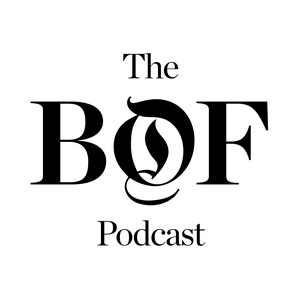
Get the free radio.net app
- Stations and podcasts to bookmark
- Stream via Wi-Fi or Bluetooth
- Supports Carplay & Android Auto
- Many other app features
Get the free radio.net app
- Stations and podcasts to bookmark
- Stream via Wi-Fi or Bluetooth
- Supports Carplay & Android Auto
- Many other app features
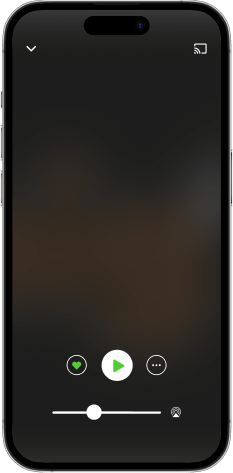

The Business of Fashion Podcast
download the app,
start listening.





